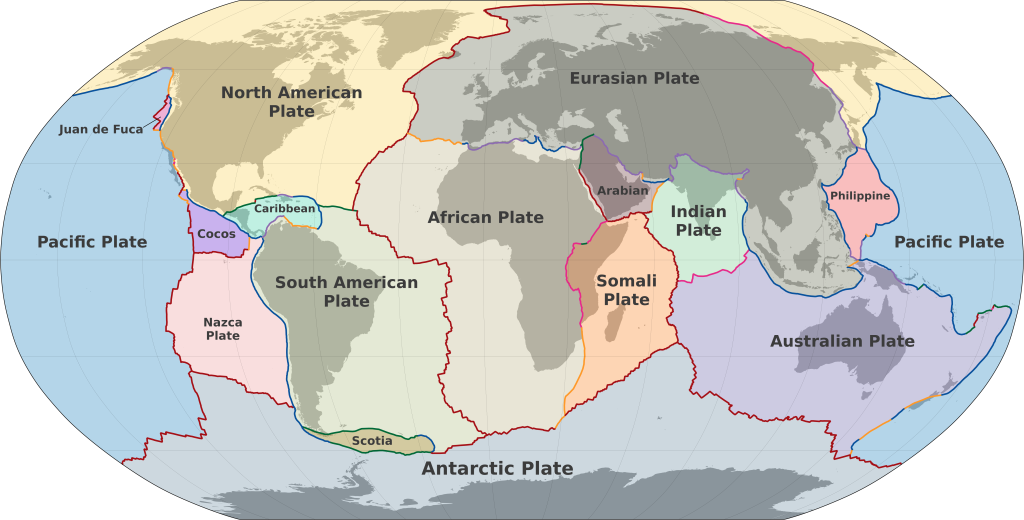When we look at a map, we see Australia sitting all alone in the ocean, looking a lot like an island. Then, up in the North Atlantic Ocean, we find Greenland—also sitting by itself, surrounded by water, and the largest island in the world. So, why do we call Greenland an “island” but Australia a “continent”? Let’s dive in and explore!

1. What’s an Island, and What’s a Continent?
Before answering, it’s important to understand the definitions of these terms.
An island is any piece of land completely surrounded by water and smaller than a continent. Islands can be tiny, like a small patch of sand, or massive, like Greenland.

A continent, however, is a larger landmass with its own tectonic plate, usually bigger than islands. Continents are often home to many different countries, landscapes, climates, and ecosystems.

But size alone isn’t the only deciding factor, as we’ll soon see. Let’s take a closer look at why Australia and Greenland fit their labels.
2. Why is Greenland an Island?
Greenland is the largest island in the world, covering about 2.16 million square kilometres. To give you an idea of its size, it’s about 50 times bigger than the United Kingdom! Greenland is surrounded by the Arctic and Atlantic Oceans, which definitely make it feel isolated.

Key Reasons Why Greenland is Called an Island:
- Not on Its Own Tectonic Plate: Greenland sits on the North American tectonic plate, sharing it with Canada, the United States, and Mexico. Australia, on the other hand, has its own tectonic plate, which is part of what makes it a continent.

- Size Compared to Continents: Although large, Greenland is still smaller than any continent. Even Australia, the smallest continent, is nearly four times the size of Greenland.

- Human Culture and History: Greenland, with its icy climate, has mainly been home to indigenous Inuit populations and Danish settlers. Continents usually feature a larger variety of cultures, histories, and economies.

Because of these reasons, even though Greenland is gigantic, geographers and scientists agree it’s more like an island than a continent.
3. Why is Australia a Continent?
Australia is about 7.7 million square kilometres—so big that it could fit Greenland inside it almost four times over! Yet, Australia is surrounded by water, like an island. So, why is it a continent?

Key Reasons Why Australia is Considered a Continent:
- Tectonic Plate: Australia sits entirely on its own tectonic plate, known as the Australian Plate. A tectonic plate is a huge piece of the Earth’s crust that moves around and carries landmasses. This plate makes Australia more of a “self-contained” landmass, which is a major reason it’s classified as a continent.

- Distinct Ecosystems and Biodiversity: Unlike islands, which may have ecosystems similar to nearby landmasses, continents typically have unique flora and fauna. Australia is famous for its unique animals, like kangaroos, koalas, and platypuses, that you won’t find naturally anywhere else. This diversity makes Australia feel much more like a continent.

- Size and Diversity in Landscapes: While it might be the smallest continent, Australia is enormous compared to other islands. It’s home to deserts, rainforests, mountain ranges, and beaches, giving it the diverse geography often associated with continents.

So, while it’s surrounded by water like Greenland, Australia’s unique characteristics give it a “continent” title rather than an “island” one.
4. Could Australia Be Called an Island?
Interestingly, some people still debate if Australia could be called the “largest island.” After all, it meets the basic definition of being a large piece of land surrounded by water. But, geographers generally avoid calling it an island because it’s considered too massive and self-contained. In other words, once a landmass reaches a certain size, calling it a continent just makes more sense.

Another reason is that Australia isn’t just large in size but also has a variety of climates, animals, and plants. This diversity makes it more like a continent in the scientific world.
5. Comparing Australia and Greenland
| Feature | Greenland | Australia |
| Size | 2.16 million sq km | 7.7 million sq km |
| Surrounded by Water | Yes | Yes |
| Tectonic Plate | Part of North American Plate | Own plate (Australian Plate) |
| Climate | Mainly Arctic | Varied: desert, rainforest, temperate |
| Biodiversity | Limited due to ice | Rich in unique animals and plants |
| Continent Status | No | Yes |
As you can see from this comparison, even though both are large landmasses surrounded by water, their differences are what lead to their distinct classifications.
6. Fun Facts About Greenland and Australia
- Greenland’s Ice: Around 80% of Greenland is covered in ice! This ice is so thick that if it melted, it could raise global sea levels by over seven metres.

- Australia’s Unique Animals: Australia is home to many animals that are not found anywhere else. This is because Australia was isolated from other landmasses for millions of years, allowing unique species to evolve.

- Big but Different: If you put Greenland and Australia side by side on a map, Greenland might look bigger due to map distortions. In reality, Australia is much larger in area than Greenland.

7. Why Does This Classification Matter?
Calling Australia a continent and Greenland an island might seem like just labels, but it actually helps geographers and scientists better organise the world’s landmasses. By using specific criteria like tectonic plates, biodiversity, and cultural differences, we can better understand and study our planet.

These definitions also help us understand the history of Earth. Tectonic plates, for example, play a huge role in shaping our planet’s landscapes and have a big impact on where landmasses form. Studying the difference between continents and islands gives scientists clues about how land shifted and broke apart over millions of years.
Conclusion
To wrap it up, Greenland and Australia might both be surrounded by water, but they’re classified differently because of unique traits. Greenland is the world’s largest island because it’s part of the North American tectonic plate and is much smaller than Australia. Australia, on the other hand, is considered a continent due to its size, unique biodiversity, and the fact that it has its own tectonic plate.
For more interesting articles, please visit www.kidzherald.com





